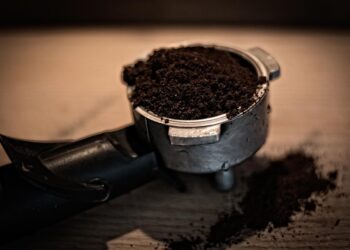Exploring the World of Coffee Filters: Materials
Coffee is more than just a beverage; it’s a global phenomenon that touches millions of lives daily. Integral to brewing this beloved drink is the coffee filter, a seemingly simple tool that plays a crucial role in extracting the perfect cup. But as any coffee aficionado knows, not all coffee filters are created equal. In this article, we’ll delve into the different materials used in coffee filters, discuss their impact on the coffee’s flavor, and help you choose the best option for your brewing needs.
Coffee Filter Basics: What They Do and Why They Matter
A coffee filter’s primary role is to separate the coffee grounds from the water, ensuring your brew is free from sediments. However, the material of the filter can also affect the taste, aroma, and body of your coffee. It can determine the flow rate of water and influence the extraction process, ultimately impacting the flavor profile of the final product.
Common Coffee Filter Materials
Paper Filters
The most widely used material, paper filters are popular for their convenience and effectiveness. They are typically made from disposable, biodegradable natural paper, but bleached (white) and unbleached (brown) versions exist. Paper filters typically remove most of the coffee oils (cafestol and kahweol), which can help in reducing cholesterol but might also strip away some desirable flavors, resulting in a cleaner and brighter cup.
Pros:
- Prevents coffee grounds from entering the brew.
- Produces a clean, crisp taste.
- Available in various shapes and sizes.
Cons:
- Single-use, which contributes to waste.
- Can remove some flavorful oils.
- Flavor can be affected by paper quality.
Metal Filters
Metal filters, made from materials like stainless steel or aluminum, are durable and reusable. They allow more oils to pass through, which can enhance the richness of the coffee. Metal filters are popular in devices like French presses and some drip coffee makers.
Pros:
- Reusable, making them more environmentally friendly.
- Allow more oils through, typically resulting in a fuller-bodied cup.
- Durable and can last for years with proper care.
Cons:
- Require regular cleaning to prevent buildup.
- May let some fine coffee particles through, resulting in a grittier texture.
Cloth Filters
Cloth coffee filters are usually made from natural fibers like cotton or linen. They strike a balance between paper and metal, allowing some oils to pass through but catching most of the finer grounds. Cloth filters are less common but favored in many traditional coffee cultures for their unique brewing characteristics.
Pros:
- Eco-friendly and reusable.
- Provide a unique balance in flavor extraction.
- Soft body with some clarity.
Cons:
- Require thorough cleaning to avoid mold and off-flavors.
- Less durable than metal filters.
Specialty Materials
Innovation in coffee brewing has led to the development of some specialized filter materials. These include glass and ceramic filters found in specific device types (like certain pour-over setups). While less common, they offer unique properties, blending the benefits of cleanliness from paper with the durability of metal.
Choosing the Right Coffee Filter Material
When selecting a coffee filter material, consider the following factors:
- Brewing method: The choice of filter often depends on the equipment you are using. For instance, drip coffee makers commonly use paper, while French presses require metal.
- Taste preference: If you prefer a coffee with more oils and a fuller body, metal might be your best bet. For a lighter, cleaner taste, consider paper.
- Environmental impact: Reusable filters such as metal and cloth are more sustainable than disposable paper options.
- Maintenance: Think about the time and effort you can dedicate to cleaning. Metal and cloth require more upkeep compared to the convenience of paper filters.
Common Questions About Coffee Filters
Do different coffee filter materials affect health?
While there is some debate around the health impacts of coffee oils, paper filters are known to reduce oils that can raise cholesterol levels. However, these effects are minor, and regular coffee consumption is generally safe for most people.
Can coffee filter material affect brewing time?
Yes, the material can influence the flow of water through the grounds. Paper filters typically offer slower water flow, which can result in a longer brewing time compared to metal.
How often should I replace or clean my coffee filter?
For paper filters, use a fresh one for each brew. Metal and cloth filters should be cleaned after each use to remove oil and residue build-up. Over time, you may need to replace cloth filters as they wear out or retain flavors despite cleaning.
Conclusion
Understanding the differences between various coffee filter materials can enhance your brewing experience and help you make more informed choices based on your personal preferences and lifestyle. Whether you prioritize flavor, convenience, or sustainability, there’s a coffee filter material suited to every brew enthusiast’s needs. Embrace experimentation and let your palate guide you through the world of coffee filters.





